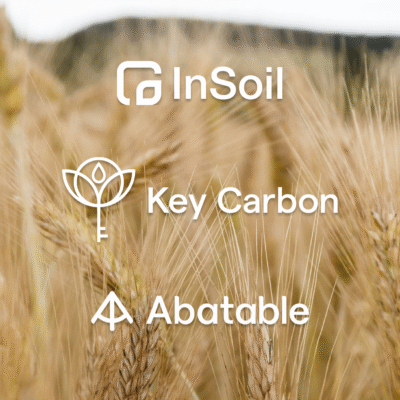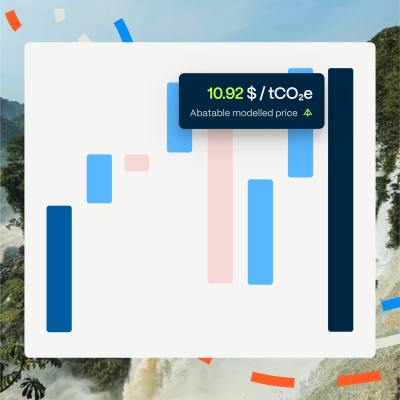Voluntary carbon markets (VCM) function on the basis that emissions can be priced around one simple impact metric – one tonne of carbon dioxide equivalent avoided or removed. However, market participants have long resisted the idea that one carbon credit issued on the market is equivalent to another. Quality of credits, as well as their verifiability, can differ vastly as a result of methodological considerations and other perceived risk factors. This heterogeneity in quality within voluntary carbon credits can influence legitimacy of different carbon offsetting claims as well as the corporates’ willingness to pay.
Unlike prices in compliance carbon markets, which are driven entirely by supply and demand, prices in the VCM can be influenced by various (often hard-to-quantify) factors. These factors can be linked to a project’s sustainable development attributes, more so than the underlying environmental integrity. Currently, there’s no standard measurement of “quality” of different carbon projects, making it difficult for buyers to appropriately price-in risk and project attribute differences.
In this article we will review initiatives which are underway with the goal to bring standardisation and definitional agreements within the VCM. We review current issues with quality and how new initiatives may offer solutions.
Current issues with quality
The supply of carbon credits has structurally been dominated by renewable energy and avoided deforestation/REDD+ carbon credits. Unfortunately, they have come with a host of quality concerns for corporate buyers, including key ones such as:
- Additionality: Renewable energy carbon credits present a high risk of non-additionally as these credits come from renewable energy projects which can already be cost-competitive with fossil fuels and might often directly benefit from government subsidies. In other words, these projects would have likely been developed even without the revenue associated from selling carbon credits (hence non-additional).
- Over-inflated baselines: There are also some major concerns with regard to environmental integrity of these credits in the ability to demonstrate the counterfactual scenario (i.e. what would have occurred in the absence of the project being implemented?). For deforestation REDD+ projects, it is very difficult to measure the emissions that would have occurred without the project, which means the amount of associated credits generated may be greatly over-exaggerated.
- Risk of leakage: Leakage occurs when avoiding deforestation or implementing renewable energy in one location simply shifts the deforestation or conventional energy use to other locations. Quantification of activity or market-shifting leakage is complex and for the purpose of simplification, developers may decide to exclude these emissions if the methodology allows for it.
On the demand side, concerns of integrity exist as well, as companies are making a variety of statements associated with their carbon credit transactions, current GHG emissions performance, and future mitigation commitments, which has led to confusion with potential to undermine the trust of the VCM.
Quality initiatives
In 2021, major developments started to drive consensus on quality standards for the VCM, with potentially transformative impacts on the market as both supply and demand sides of the equation are being redefined. Some of these initiatives were spurred by efforts that began as the Taskforce on Scaling Voluntary Carbon Markets led by Mark Carney in 2020 which have gained more traction post COP26 meeting.
Below, we describe some of these initiatives and why they are important.
Supply-side initiatives:
- Integrity Council for the VCM (ICVCM)’s first goal is to establish a set of Core Carbon Principles (CCPs), which will set new threshold standards for high-quality carbon credits and define which carbon crediting programs and methodology types are “CCP-eligible.” Offsets that meet its standards will be marked with a “CCP” label at registries and on exchanges.
- Carbon registries and standards – as for example Verra or Gold Standard – are key organisations in the ecosystem that define methodologies and principles for developers to follow. While carbon registries have not been effective in preventing the misuse of methodologies, which led to some projects being approved despite concerns around additionality and over-inflated carbon claims, registries continue to want to stay relevant and are continuously looking for ways to amend or create new methodologies s with quality safeguards. If you want to learn more about the carbon standards you can watch this helpful video:
- Carbon ratings agencies – as for example Calyx Global, BeZero Ratings and Sylvera – are new entrants in this market, and seek to bring more transparency on verified carbon claims and deliver scores of different projects against each other. This approach mirrors that of financial credit ratings or ESG ratings (scoring carbon offsetting projects using rating systems like AAA, AAA-, AA, etc.). For the most part, methodological approaches of some of these ratings agencies remain opaque, and scores at the moment feel like a “black box” to buyers and investors who need support with more nuanced corporate procurement decision making.
Buy-side initiatives:
- Voluntary Carbon Markets Integrity Initiative (VCMI) will soon be providing has now provided preliminary guidance on what constitutes a “credible” corporate claim regarding net zero and carbon neutrality. This should help add much needed clarity to not only the definitions of various climate commitments/claims made by corporates, but also whether (or when) certain types of carbon credits are appropriate to be consistent with the temperature goals of the Paris Agreement. You can read a summary of the VCMI Claims Code of Practice on our blog.
- Science-based target initiative (SBTI) published the Net Zero Standard, an initiative that verifies emission reduction targets for companies. SBTI has published guidance last October and agreed for corporates to move away from use of the term “compensation” of emissions, but rather use “beyond value chain mitigation” (BVCM) for activities which fall outside of a company’s value chain that avoid or reduce greenhouse gas emissions, or that remove and store greenhouse gases from the atmosphere. BVCM guidance governs the use of offsets and encourages companies to consider only carbon removal offsetting projects.
- Commoditization of the voluntary carbon markets through the creation of traded commodity bundles is an important step in developing a more liquid market for buyers and sellers. One of the bundles recently launched is the CBL Xpansiv standardised contract called Core Global Emissions Offset™ (C-GEO™) – which aim to be a benchmark for all energy, renewables, and other technology-based offsets credits aligning with the Core Carbon Principles, set out by the ICVCM. This approach attempts to replicate other commodity markets which trade products of a much more uniform nature as a way to build liquidity, price transparency and risk transfer.
How to Identify a High-Quality Carbon Offset
At Abatable, we recognize that defining high quality is a difficult task and over the last few months we have engaged a number of technical advisors and spoken to a list of industry experts. We tried to understand how they think about quality and what lessons we could benefit from. While there are still a lot of differences in quality approaches, common elements have emerged from those conversations which are listed below.
- The market is interested in an independent, user-friendly scoring system to assess the quality of carbon credits.
- For investors and buyers, quality can be defined through a (1) risk mitigation approach and (2) an ESG and impact materiality assessment.
- Quality and reputation of the counterparty (in this case the carbon project developer) and their track record is key to reduce implementation risk over time.
- Assessments of carbon credits delivered through ratings or any “black-boxy” score are not sufficient to drive corporate procurement decisions, and full visibility into qualitative sub-criteria scores is needed for buyers to support their level of diligence and getting to a point where they understand all nuances of projects they support.
- Qualitative commentary is helpful, but it is not sufficient, and quantitative assessments can help provide additional data insights and benchmarking across different project types and regions.
- Quality considerations should be extended around how buyers use carbon credits in their net zero claims, with developers now adopting restrictions on buyers with non-credible climate targets.
We understand that a lot of literature exists around the topic of high quality carbon credits, and different quality initiatives are already at work to try to answer the question of what makes a high quality carbon credit.
We are continuously evolving our thinking and have now published our credit quality framework which aims to provide an innovative perspective rooted around the concept of quality through principles of risk mitigation, ESG and impact materiality.
































































































